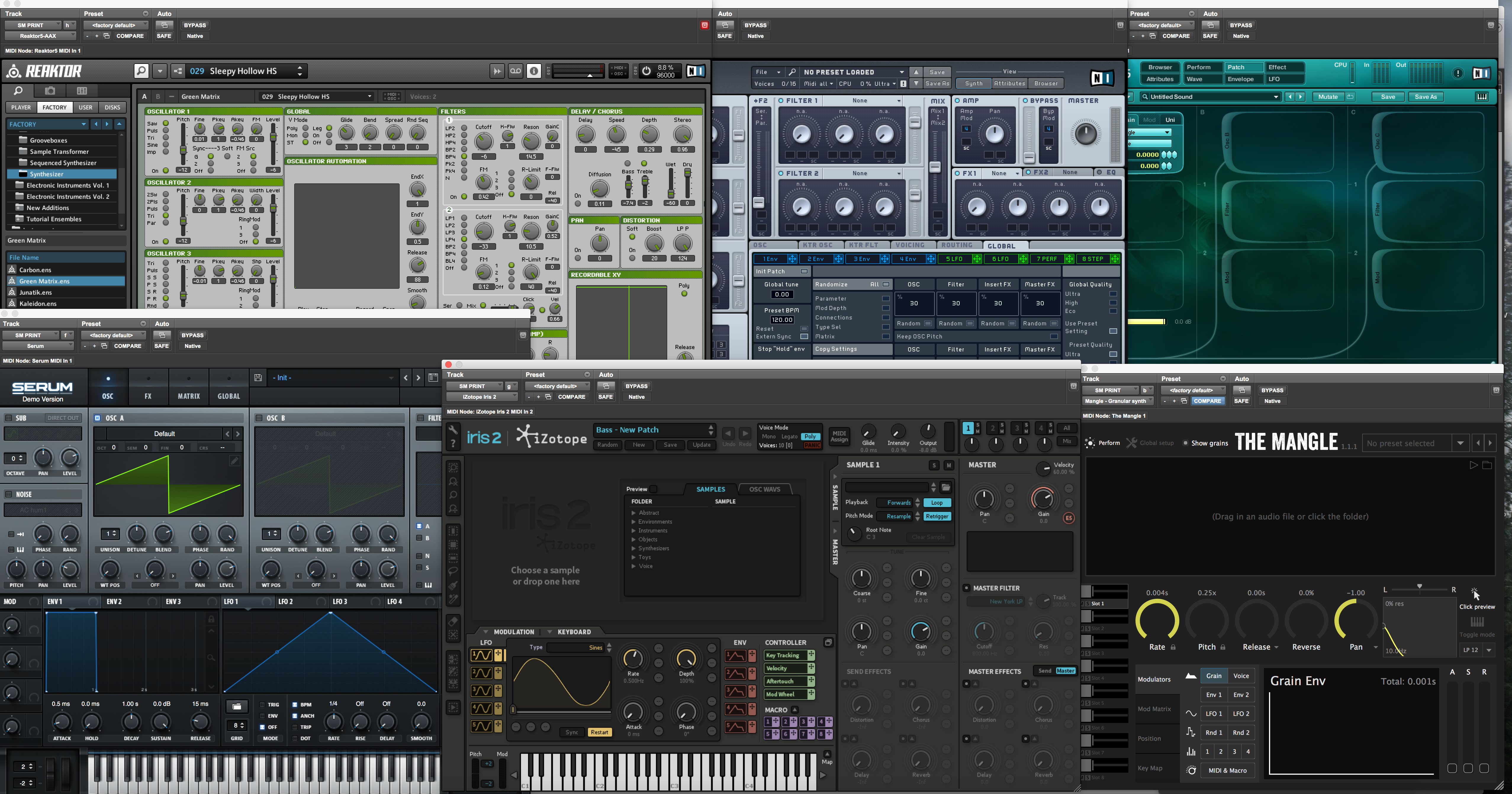
Synthesis is a vast of possibilities. It allows us to create sound, destroy it, and morph seamlessly between the two. From building up sine wave oscillators through the classic form of Aggregate Synthesis, called Additive Synthesis, to using granular synthesis to bend speed, pitch and formant, these algorithms can produce an almost staggering breadth of audio content.
Synthesis means starting with a square wave, rich with harmonic content, and then whittling away at it with filters, envelopes, and LFOs until you’ve created something new and completely unique to you. It’s about synthesizing and then resynthesizing. It’s morphing two completely different sounds into each other, and building parameters by which to control them. It means chopping, rearranging, reconstructing, and starting over from the beginning. Sometimes it comes easily and naturally, as it does with the plethora of fun and intuitive tools that we have out there in our audio toolbox. And sometimes synthesis is caustic and confusing, causing endless frustration, crappy results, and brain-to-ear leakages. Sometimes it’s really expensive to get into synthesis. Other times, it’s quite affordable.
When I look at this month’s theme, I see endless avenues for creativity. There are countless ways in which one can use synthesis to breathe fresh life into their work: be it in programming, composing, or sound designing. It’s even starting to make its way into the untouchable god of organic complexity: voice over. Don’t worry – I won’t go there today.
No matter what form of synthesis you may or may not be most interested in, I’ll bet we all can agree on one thing: synthesis means progress. It is fueled by advancing technology, powered by faster and better hardware, and constantly teases us about a better and better sounding… well, sound.